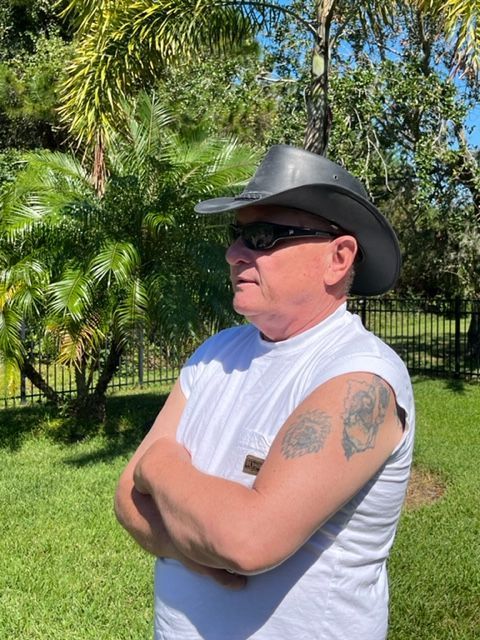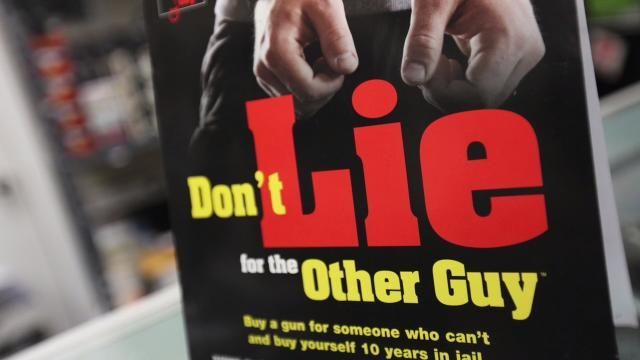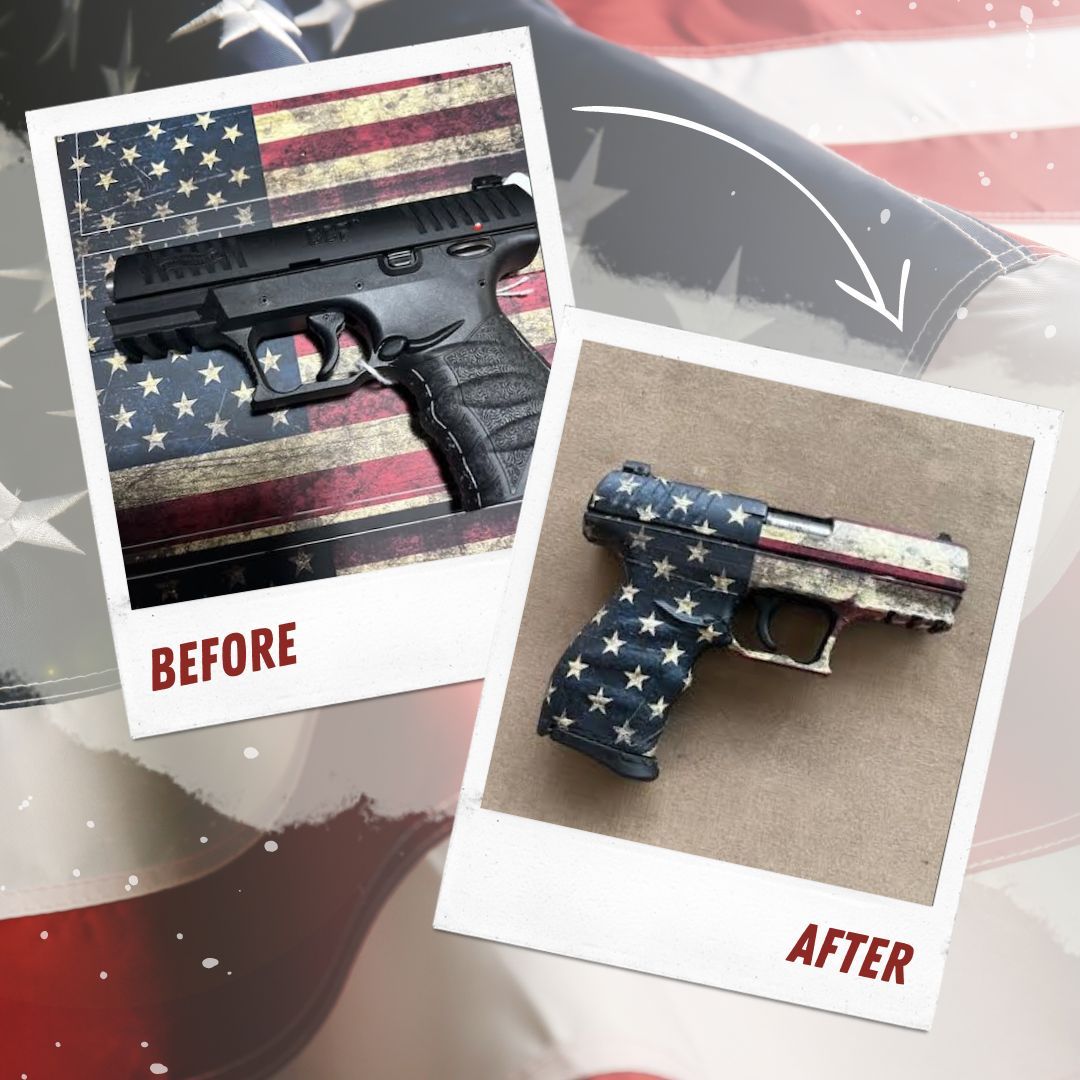Gregory Kielma • August 11, 2024
Top 5 9mm Luger Handguns Dominating Modern Firearms

Top 5 9mm Luger Handguns Dominating Modern Firearms
Gregg Kielma
The 9mm Luger, invented before the Great War, is one of the longest serving gun calibers in history. Introduced in 1901, it has served in virtually every conflict since then up until today. From World War I’s German army to the British army fighting ISIS in Syria, the Luger round has served militaries for over a century. Despite its age, the 9mm is more dangerous than ever before, due to innovations in ammunition lethality that squeeze greater performance out of the bullet.
Adequately powerful and compact, the 9mm Luger round received newfound popularity in the 1980s when the so-called “Wonder Nine” pistols upended the dominance of revolvers and large caliber handguns on the U.S. market. It is the standard handgun caliber for NATO members, with many armies on their second or third generation 9mm pistol, and was recently re-adopted by the U.S. Army for its new issue M17 Modular Handgun System. The 9mm Luger round will be around for many more years. Here are five of the best guns the round is used in.
#1-Glock 19
The Glock 19 was one of the first Glock variants produced. Released in 1988, it was basically the same handgun albeit with a shorter barrel and grip. This reduced the magazine capacity from seventeen rounds to fifteen, but also produced a pistol that was easier to conceal. Today, it is generally acknowledged among handgun enthusiasts as the best Glock model for all-around use. The Glock 19 has been adopted by the U.S. Navy SEALs, U.S. Army Rangers and a modified version competed for the U.S. Army’s Modular Handgun System competition.
The Glock 19 has an overall length of 7.36 inches and a barrel length of 4.01 inches. It is a double-action pistol, meaning that after a round is chambered the pistol only requires pulling the trigger to set the firing pin and fire. Subsequent shots will also only require a single trigger pull. This eliminates the need to cock the hammer prior to firing but does introduce a slightly longer trigger pull. The basic Glock design incorporates three safeties, including a firing pin and drop safety, as well as trigger safety. It does not have an external manual safety mechanism.
#2 Sig P226
The Sig P226 was originally developed from Sig Sauer’s P210 pistol as a replacement for the long-serving .45 ACP 1911A1 handgun. The resulting pistol failed to win the contract, which went to the Beretta M9 instead. Although the U.S. Navy also picked up the Beretta, early problems with metal quality resulted in cracked slides among pistols with high round counts. SEALs, who experienced defect-related accidents, turned to the Sig P226 instead, calling it the Mark 11. Adoption by U.S. police forces further raised the P226’s profile.
The P226 is an all metal handgun with a metal frame. It has a fifteen-round magazine, an overall length of 7.72 inches, and a barrel length of 4.11 inches. Loaded, the gun has a weight of 2.28 pounds. Like the Glock 19 the P226 is also a double action pistol, although it also has a single action mode allowing the pistol to be manually cocked. It also features a decocking lever to lower the hammer without pulling the trigger.
#3 Heckler & Koch VP9
One of the newest 9mm Luger handguns is the Heckler & Koch VP9. Introduced in 2014, the VP9 is like the rest of the handguns on this list a high capacity, twin-stack handgun with a steel slide and polymer frame. The VP9 carries up to fifteen rounds—as many as a Glock 19. This German-designed pistol has dimensions similar to the G19 and P226 and uses a cold hammer forged barrel for increased accuracy and barrel life.
Unlike older pistols that utilize a hammer, the VP9 is a striker-fired pistol. Striker-fired pistols use a spring-loaded firing pin that is partially cocked by pulling back and releasing the slide. Pulling the trigger completes the cocking action and releases the firing pin. As a result, striker fired pistols are immune to any accidental discharge that does not involve pulling the trigger—such as dropping the handgun on a hard surface.
A new feature—increasingly common in handguns—of the VP9 is the ability to tailor the pistol’s grip to a wide variety of hand sizes. Each pistol comes complete with a number of removable backstraps and grip panels to reduce or enlarge grip width, with a total of twenty-seven different size configurations available for small to large hands.
#4 Smith & Wesson M&P
The Smith & Wesson M&P (Military and Police) was first introduced in 2005 and as a hybrid of two previous guns, the Sigma and the SW99. Like the rest of the guns on this list, it has polymer frame and steel slide, a large internal magazine (seventeen rounds) and a striker-fired operating system. The M&P has aggressive good looks, with serrations on the slide to promote a better grip, and a built-in Picatinny rail under the barrel for mounting lights and laser pointers.
Smith & Wesson claims that the M&P’s low bore axis reduces muzzle rise and allows the shooter to get back on target faster. In many respects it is similar to the Glock 17—including magazine size—but one reviewer has pointed out that it is slightly larger and heavier. The M&P also features a loaded-chamber indicator which tilts upward when a round is in the chamber, ambidextrous controls and four interchangeable palm swell inserts of different sizes to accommodate different hand types.
#5 Springfield XD
Originally developed in Croatia as the HS2000, the Springfield XD (“Extreme Duty”) handgun has enjoyed considerable success in the United States. The XD externally resembles a Glock, from nearby Austria, though is somewhat blockier in appearance. The standard service model features a four-inch barrel—par for the course on this list—and a double-stack magazine that holds up to sixteen rounds of 9mm Luger ammunition.
The Springfield XD combines a number of older and newer features from other guns on this list to create a fairly unique and impressive package. The XD has a grip safety like the one on the Colt 1911A1 handgun, that prevents the gun from being discharged unless gripped properly. It also features a trigger safety, like the Glock, a drop safety that prevents the striker from being released, and a loaded chamber indicator like the Smith & Wesson M&P. A flip of a lever allows the pistol to be quickly field stripped for cleaning.

If you have a concealed carry permit and you have a gun with you, and you walk into or need to go into a store that doesn’t allow guns, what do you do? Says Kielma, this is an easy one for me. I do not and never will enter a place that has ca no "firearms allowed" , ever. I’ll spend my hard-earned CASH SOMEPLACE ELSE. If I miss the sign by accident and enter then, I’ll suffer the consequences. NOTE: Please check for signs on doors. Keep your firearm concealed and no one should bother you if you miss the door sign. Let’s take a look at BOB an avid reader of my website would do: I have a concealed carry permit, and I carry concealed all the time. Concealed means unseen. Unless they have metal, detectors and security guards wandering, I simply ignore the signs. The difference would be places whereby actual law, you cannot be armed on the premises. Federal and government buildings for instance. True story. We went to see a show. We had to park some distance away and when we got to the place to present our tickets… you guessed it, they were wanding everybody. My wife says to me, “well, you've got your ticket and seat assignment, hurry back.” I just nodded and stayed in line. When she got up there, they wanded her and glanced in her purse. I was next. I told the female doing the wanding that I was going to set things off because I had a lot of metal on me. I then pulled a suspender strap from under my coat and showed her the metal concho on it. She told me OKAY, swiped the wand down my front and back - it went off - and she waved me through. When we took our seats my wife side mouths to me, “one day you're going to have to tell me how you did that.” “Old Jedi mind trick I replied, these are not the droids you're looking for.” What was I carrying? Full size main firearm with two backup magazines, backup firearm with two speed strips, Leatherman Wave, Swiss Champ, Thru Nite flashlight, neck knife and a couple other pocketknives and a smartphone. Several points: No place on the tickets did it say no firearms or pocketknives. Matter of fact there was no mention of security. This was a public venue. I had already paid to be there. My permit was valid in the State I was in. Concealed means just that. My 4th Amendment rights didn't evaporate with my purchase of a ticket. The fact I got through security meant others may have too. Was this event taking legal responsibility for my security and that of my family? Of course not. As we were leaving my son said, “so much for their security.” He was right. Security unless you have the Secret Service providing it is pretty much an illusion/delusion.

What's more powerful than the .308 and .30-06 for certain types of hunting? How does it compare? What do you think? .45 70? Gregg Kielma .45-70 ? As a straight-walled cartridge, it and similar types of ammunition are favored for deer in states were bottlenecked cartridges, such as 30–06, cannot be legally used. In its original loading, it delivers 2,221 joules of energy but has been loaded much hotter to the point that 3800–4600 joules are possible. A standard .308 load delivers around 3600 joules and 30–06 around 3800. It is a good example of “knockdown power" type of ammunition in that a large chunk of lead, traditionally not moving as fast, hits hard because of its mass. More modern cartridges made use of smaller bullets and smokeless powder to create ammunition that hits hard with a moderate projectile and much higher velocity. The tradeoff is that .308 and .30–06 have far less muzzle drop at long ranges. Off the top of my head, the projectile drops something like 4′ at 400 yards, but it has been a while since I looked that up. .308 is much flatter shooting. Just my opinion. What do you think?

Is it safe to unload a handgun every time we get home? Gregg Kielma This depends on several different situations. You must find what works better for you, and your family. They did that for years in the military. They would safe and clear everyone’s weapons before they went into the mess halls. They would take a pistol out of a perfectly solid holster that could be dropped out of an aircraft and not go off and proceed to pull the slide and the trigger into a clearing barrel to make sure it was empty. Occasionally it wasn’t. It was a bad idea. So eventually they stopped having people do it and do you know what!? No one was shooting guns in the mess hall. Every time you handle or have people handle guns they can go off. Especially WHEN PART OF THE PROCEDURE IS PULLING THE TRIGGER. A better procedure is NOT TO PULL THE TRIGGER. Again, if your weapon is loaded, the firearm you carry should be. You shouldn’t unload it unless you are cleaning it or are going to swap it out with another carry weapon in the gun safe. It is said that you do need to release spring tension on magazines, it is said by all the old guys, but that is every few years and you should be cleaning any gun more often than that. Loading and unloading your weapon every single day is something I suppose you could do. I wouldn’t if I wasn’t being paid to do so. My EDC stays loaded for a few months at a time. Then I cleaned it and get it ready for another 3-month tour. Every time you mess with a gun you have the chance of an accidental discharge. It is designed to sling supersonic metal out the front of it. Accidents happen every single day and the way to increase the number of accidents is unnecessary gun handling. Do not push yourself past competence and into complacency. Let’s Take a LOOK: • You do something a hundred times, and you get good at it. • A thousand times and you get great at it. • You do it 6,000 times and you get complacent because you have done it TOO much and that is when you get bit. That is why you can’t do the same job for decades and maintain the same exact level of proficiency. Chances are you may or will get careless.

I have a concealed permit to carry and if I find myself in a threatening situation, can I show it to defuse the threat without it being seen as brandishing even though it resolved peacefully? Gregg Kielma Gregg Kielma gets asked this question a lot. Says Kielma, “I get asked this a lot and can give you what I’d do if I was in a bad situation I didn’t start nor could not avoid or escaped from. Let’s take a look”. Never pull a weapon to threaten and never fire a warning shot in life-threatening situations. If you reveal a weapon, someone might rush you, disarm you, and use it against you. If you are in a life-threatening situation, stay calm and use verbal de-escalation without making threats. If that fails and you're confronted by a violent person, do not let them get close—keep moving back and maintain at least 25 feet of distance. If they get any closer or fail to comply with your instructions, in a loud voice shout, drop your weapon, drop your weapon. As a last resort and only as a last resort, draw your weapon and fire shots at center mass. Continue firing until there is no longer a threat. When you shout "drop your weapon" it lets others know you felt threatened. If a shooting occurs, you will be arrested—do not speak to police without an attorney present. Invoke your 4th and 5th amendment rights. Tell them you'll provide a full statement once you have legal counsel; you only get one opportunity to do so properly. You cannot hesitate in a life-or-death situation. If you do, you will be among the dead. Kielma’s final thought, says Gregg, “please take my training CCW course. I provide a lot of information in the class that is easy to understand and may keep you out of jail and alive.

Indianapolis Pimp Given Three Life Sentences in Federal Prison for Running Sex Trafficking Enterprise and Committing Murder Tuesday, November 25, 2025 U.S. Attorney's Office, Southern District of Indiana Editor's Note: This sentencing occurred on September 25, 2025, but was not published at that time due to government shutdown. Press release posted and made available following the return to normal operations. INDIANAPOLIS- Kristopher McDonald, 37, of Indianapolis, has been sentenced to three life sentences in federal prison. In May of 2025, a federal jury found McDonald guilty of the following eight counts related to his operation of a violent human trafficking enterprise: Count 1: Murder in aid of racketeering activity. Count 2: Brandishing and discharging a firearm during a crime of violence. Count 3: Possession of a firearm by a convicted felon. Counts 4 & 5: Sex trafficking by force, fraud or coercion. Count 6: Enticing an individual to travel in interstate commerce to engage in prostitution. Counts 7 & 8: Travel act; a federal crime to engage in interstate or international travel, for the purpose of furthering certain "unlawful activities.” According to trial testimony, from June 2023 through April 2024, Kristopher McDonald orchestrated and led a human trafficking operation in Indianapolis and other states. During this time, he recruited and exploited women, some from out of state, for commercial sex, maintaining strict control over the operation. McDonald managed all aspects of the criminal enterprise, using force, fraud, and coercion to control the activities of the women. McDonald recruited the women over the internet, making false promises to them to lure them into his enterprise. He then used several means to manipulate and control the women to engage in commercial sexual activity. McDonald limited the victims’ access to the outside world by taking control of their personal identification, cash cards, and cellphones. McDonald threatened the women with physical violence and directly employed violence, including pistol whipping, to compel them to engage in commercial sex. McDonald also caused the women to become addicted to crack cocaine by rewarding them with the drug when they followed his orders and withholding it when they did not make enough money on a given day. McDonald also threatened to kill the victims and their families if they contacted the police. McDonald often compelled the victims to engage in commercial sexual intercourse on nine or ten occasions per day. The trial testimony also established that on October 11, 2023, McDonald murdered another man in furtherance of his human trafficking organization. After the man engaged in commercial sex with one of the victims, McDonald emerged from an adjacent room and demanded an additional $200 from the man at gunpoint. The male victim drew his own firearm in self-defense and shot McDonald . McDonald ran back into the adjacent room, loaded his firearm with a magazine, and shot the male victim eleven times in the back as he attempted to flee the hotel room. McDonald , a previously convicted felon, was not permitted by law to possess the firearm that he used to murder the male victim. “Kristopher McDonald’s reign of terror is over, and our community is safer because of it. This sentence sends a clear message that those who exploit vulnerable individuals through violence, addiction, and fear will face the full force of federal justice,” said Tom Wheeler, United States Attorney for the Southern District of Indiana. “I am grateful for the outstanding work of our law enforcement partners, whose collaboration and dedication made this prosecution possible, and to the survivors, whose strength and courage in coming forward were instrumental to securing justice.” “There is no place in our society for criminals like Kristopher McDonald . The crimes he committed were despicable, outrageous, and cut to the very core of our moral fabric. Life in prison is exactly what he deserves — and ATF could not be prouder of the agents whose relentless work made this outcome possible,” said ATF Columbus Field Division Special Agent in Charge Jorge Rosendo. “Kristopher McDonald wielded violence as a weapon to coerce victims, expand his sex-trafficking operation, and maintain power through fear,” said Adam Jobes, Special Agent in Charge, IRS Criminal Investigation, Chicago Field Office. “His life sentence removes a ruthless predator whose presence threatened the very fabric of our communities—and the importance of that removal cannot be overstated. IRS Criminal Investigation will continue leveraging its forensic accounting expertise to follow the money, dismantle criminal enterprises, and bring violent offenders like McDonald to justice.” The Bureau of Alcohol, Tobacco, Firearms, and Explosives, Internal Revenue Service Criminal Investigation, and IMPD investigated this case. The sentence was imposed by U.S. District Judge Tanya Walton Pratt. U.S. Attorney Wheeler thanked Assistant U.S. Attorneys Bradley Blackington and Michelle P. Brady, who prosecuted this case.

New York Man Sentenced to 10 Years’ Imprisonment on Firearms Offenses Tuesday, November 25, 2025 U.S. Attorney's Office, Middle District of Pennsylvania SCRANTON- The United States Attorney’s Office for the Middle District of Pennsylvania announced that on November 24, 2025, Senior United States District Judge Malachy E, Mannion sentenced Naquan Simmons, age 31, of Bronx, New York, to 120 months’ imprisonment for false statements in the acquisition of firearms. According to United States Attorney Brian D. Miller, on September 22, 2022, Naquan Simmons travelled to a gun store in Wilkes-Barre Township, Luzerne County, with a woman suffering from opioid use disorder. The woman purchased two guns in her name on behalf of Simmons, who was legally prohibited from purchasing firearms. Simmons provided the woman with heroin in exchange for the two firearms. One of the firearms was later located in Bronx, New York. Thereafter, on August 15, 2023, Simmons entered a gun store in Plains Township, Luzerne County, with a man who Simmons was supplying with crack cocaine. The man attempted to purchase the firearm in his name on behalf of Simmons but never received the firearm due to law enforcement intervention. At the time of these offenses, Simmons was on federal supervised release in the Southern District of New York for conspiracy to commit racketeering and use of a firearm in relation to a crime of violence. The case was investigated by the Bureau of Alcohol, Tobacco, Firearms and Explosives (ATF) and the Luzerne County Drug Task Force. Assistant U.S. Attorney Jenny P. Roberts prosecuted the case.

Ocala Convicted Felon Who Attempted To Pawn A Firearm Sentenced To Five Years In Federal Prison Friday, November 21, 2025 U.S. Attorney's Office, Middle District of Florida Ocala, Florida – United States District Judge Thomas P. Barber has sentenced Shymiere Montese Howell (31, Ocala) to five years in federal prison for possession of a firearm and ammunition affecting commerce by a convicted felon. Howell entered a guilty plea to the offense on July 22, 2025. According to court documents, Howell is a 19-time convicted felon with prior convictions that include possession of a firearm by a felon, child neglect, felony battery, and drug possession. On November 8, 2024, Howell entered a Leesburg pawn shop and attempted to sell a loaded handgun. When law enforcement arrived at the pawn shop, Howell attempted to push past them and run out of the store. He was quickly apprehended. As a convicted felon, Howell is prohibited from possessing firearms or ammunition under federal law. This case was investigated by the Bureau of Alcohol, Tobacco, Firearms and Explosives and the Leesburg Police Department. It was prosecuted by Assistant United States Attorney William S. Hamilton. This case is part of Operation Take Back America, a nationwide initiative that marshals the full resources of the Department of Justice to repel the invasion of illegal immigration, achieve the total elimination of cartels and transnational criminal organizations (TCOs), and protect our communities from the perpetrators of violent crime. Operation Take Back America streamlines efforts and resources from the Department’s Organized Crime Drug Enforcement Task Forces (OCDETFs) and Project Safe Neighborhood (PSN). Updated November 21, 2025

TALLAHASSEE MAN FOUND GUILTY OF POSSESSION OF A FIREARM BY A CONVICTED FELON AND POSSESSION OF A MACHINE GUN Wednesday, November 26, 2025 U.S. Attorney's Office, Northern District of Florida TALLAHASSEE, FLORIDA – Sincere M. Perkins, 25, of Tallahassee, Florida, was found guilty by a federal jury of possession of a firearm by a convicted felon and possession of a machine gun. The guilty verdict was announced by John P. Heekin, United States Attorney for the Northern District of Florida. U.S. Attorney Heekin: “Thanks to the outstanding collaboration between our local and federal law enforcement partners to investigate this case, and this successful prosecution by my office, our community will be made safer while this violent felon finds himself in federal prison. With this conviction, we take yet another step toward fulfilling the promise made by President Donald J. Trump and Attorney General Pam Bondi to Take Back America from the perpetrators of violent crime who have plagued our streets for far too long.” Evidence at trial demonstrated that members of the United States Marshals Task Force located the defendant at an apartment in Tallahassee because of an outstanding warrant for his arrest. A subsequent search of the apartment found multiple firearms, including a pistol that had been modified to fire as a machinegun. Ballistics from two of the recovered firearms matched shell casings from a prior shooting in Quincy, Florida. The defendant’s DNA was found on both firearms that had been used in the shooting, and a recorded jail call revealed that the defendant was knowingly in possession of the firearms despite his status as a previously convicted felon. Sentencing is scheduled for February 9, 2026, at 2:30 pm. at the United States Courthouse in Tallahassee before Chief United States District Court Judge Allen C. Winsor. This conviction was the result of a joint investigation by the Bureau of Alcohol, Tobacco, Firearms, and Explosives, the United States Marshals Service, the Quincy Police Department, and the Tallahassee Police Department, with assistance from the Florida Department of Law Enforcement. Assistant United States Attorney James A. McCain prosecuted the case. This case is part of Operation Take Back America a nationwide initiative that marshals the full resources of the Department of Justice to repel the invasion of illegal immigration, achieve the total elimination of cartels and transnational criminal organizations (TCOs), and protect our communities from the perpetrators of violent crime. As part of its PSN strategy, the United States Attorney’s Office is encouraging everyone to lock their car doors, particularly at night. Burglaries from unlocked automobiles are a significant source of guns for criminals in the Northern District of Florida. Please do your part and protect yourself by locking your car doors. The United States Attorney’s Office for the Northern District of Florida is one of 94 offices that serve as the nation’s principal litigators under the direction of the Attorney General. To access public court documents online, please visit the U.S. District Court for the Northern District of Florida website. For more information about the United States Attorney’s Office, Northern District of Florida, visit http://www.justice.gov/usao/fln/index.html. Contact United States Attorney’s Office Northern District of Florida USAFLN.Press.Office@usdoj.gov X: @USAO_NDFL Updated November 26, 2025

Judge Christine Schaller Another Judge Christine Schaller Upholds Washington AWB Mark Chesnut - A judge in Washington has upheld the state’s ban on so-called “assault weapons,” ruling that the controversial law meets state constitutional muster. However, his reasoning for making the ruling was completely faulty. For some background, firearms dealer Guardian Arms sued the state over the 2023 law, claiming SHB 1240, the ban on common semi-auto rifles, violated Article I, Section 24 of the Washington State Constitution, which protects the right to bear arms. After discovery in the case Guardian Arms v. State of Washington, both the state and the Alliance moved for summary judgment. Last week, however, a Thurston County Superior Court judge upheld the law under the state constitution. In doing so, Judge Christine Schaller held that assault weapons are not commonly used in self-defense and are therefore not protected arms under the Washington State Constitution. The Court also held that, even if assault weapons were protected, they would be subject to reasonable regulation under the State’s police power to protect public safety and welfare. Both points in Judge Schaller’s ruling are clearly disputable, as many courts in the past have ruled just the opposite. In fact, the U.S. Department of Justice is currently weighing in on the side of the plaintiffs in two different state “assault weapons” ban cases.

New Yorkers Are Finally Learning How Hard the City Makes Gun Ownership Scott Witner New York isn’t moving toward constitutional carry, but the demand for firearms in New York City is exploding. Gun shops and instructors are slammed with residents trying to navigate the state’s maze of requirements just to exercise a basic constitutional right. What many first-time buyers are discovering is that they can’t simply walk into a store, buy a gun, and or, walk out. Not that day. Not that week. Sometimes not even that year. The delays and layers of red tape are by design. New York’s political class has spent decades building a system that frustrates lawful citizens into giving up. Fear Is Driving the Surge After the Supreme Court struck down New York’s restrictive “may issue” carry scheme in Bruen, interest skyrocketed. But the rush started earlier. Crime spiked during the pandemic. Riots and looting hit the city. Police budgets were cut. Cashless bail kept violent offenders on the street. Manhattan DA Alvin Bragg’s policies turned the revolving door even faster. Add a wave of officer retirements, and many residents decided they were on their own. Then came October 7, 2023. The Hamas attacks on Israel, paired with a rise in antisemitic crime at home, pushed many Jewish New Yorkers to start the permit process immediately. The election of avowed anti-gun, anti-police mayor Zorhan Mamdani sent another shockwave through the city. Police retirements spiked again. Before Bruen, fewer than 100 New Yorkers per month applied for a carry permit. After Bruen, the monthly average climbed to 400–600. After October 7, applications hit a record of more than 1,270 in a single month. Since then, 700–800 residents are applying monthly. The New Gun Owner Is No Longer Who New York Politicians Pretend The last several years have reshaped America’s gun-owning population. New York reflects that shift. New applicants include Jewish residents, Black and Hispanic residents, Asian Americans, and members of the LGBT community. The Second Amendment is for everyone, and people who never imagined owning a gun now see the value of self-reliance.















